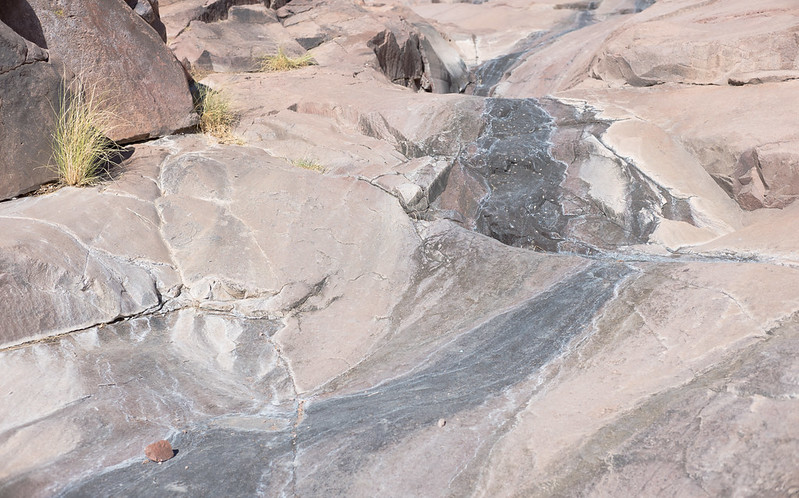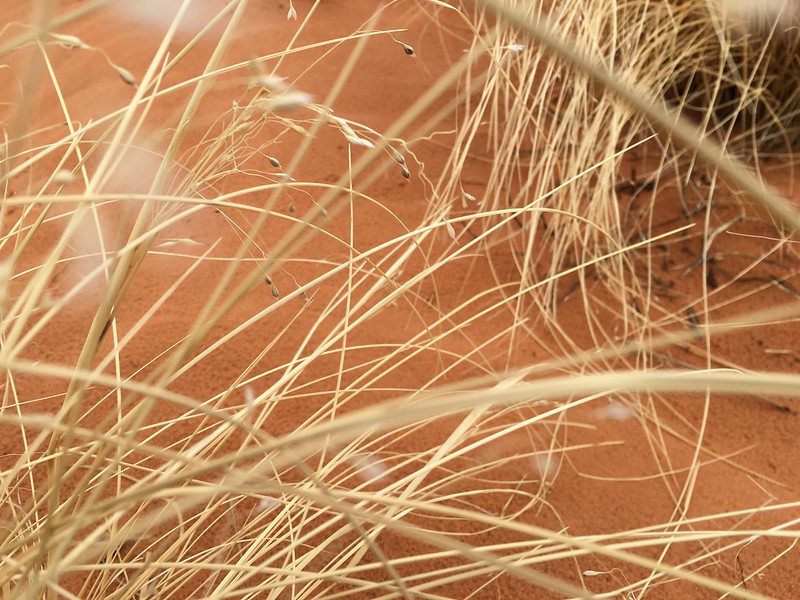Walking Exercises: Lines and Squiggles in the Desert
By Ron Broglio
Duration: momentary. Nature: changeable. Perception: dim. Condition of Body: decaying. Soul: spinning around. Fortune: unpredictable. Lasting Fame: uncertain. Sum Up: The body and its parts are a river, the soul a dream and mist, life is warfare and a journey far from home, lasting reputation is oblivion. Marcus Aurelius, Meditations

This is a seemingly simple exercise but will change your relationship to your surroundings by just slowly walking across a desert terrain. It is ideal in a relatively level and open space. Duration: 32 minutes
Preparation: Start in a place that can serve as a visibly distinct marker and can be seen for at least 100 feet. If need be, temporarily attach a scarf or bandanna to a tree or other vertical structure so that your make-shift flag can be seen at about 100 feet. This will help to ensure you can find your way back if you get slightly disoriented. Also recommended is a hiking whistle which is always handy should you get lost or have an emergency.
Part One, Lines: For this part of the exercise, you will slowly walk making a square shape. Start by walking in a straight line for 4 minutes. After 4 minutes, turn clockwise 90 degrees and proceed walking in a straight line for another 4 minutes. Turn clockwise 90 degrees and walk four minutes. Repeat again for a total of 3 turns and 4 lines which will make a square and return you (more or less) to the place you started. You may have to walk over rocks or for more difficult obstacles, you may have to make a series of straight lines around the obstacle. The key is to try to maintain straight lines from each 90-degree turn. At the end of part one return to your designated starting place. Duration of part one is 16 minutes.
Enlightenment is a dodgy proposition. It all depends how much you want to risk. Not money so much as personal safety, precious time, against a very remote long shot coming in. It happens, of course. Out of the dust, the clouds of sweat and breath, the drumming of hooves, the animal rises up be-hind the field, the last you’d’ve expected, tall, shining, inevitable, and passes through them all like a beam of morning sunlight through the spectral residue of a dream. But it’s still a fool’s bet and a mug’s game, and you might not have the will or the patience. Thomas Pynchon, Against the day
Part Two, Squiggles: For this part of the exercise, slowly walk freely in any direction and move around objects and terrain in sensitivity to the landscape and your body. There is no set line nor direction and you can move is squiggles, curves, and any shape that corresponds to how your body feels along the landscape. Do this for 8 minutes. Then turn toward the designated starting space and take 8 minutes to return using the same and squiggle method of responding to the landscape. Duration of part one is 16 minutes.
Alignment in tentacular worlding must be a seriously tangled affair! Donna Haraway, Staying with the trouble
Reflections: What differences did you notice between the lines and squiggle walking? How did your body, mind, attention, or awareness of the landscape change? Draw how your walks feel and write down your observations.
Further information: Lines and squiggles have associations with the desert Southwest. Native Americans did some farming but many tribes were also seasonally semi-nomadic for hunting, harvesting, and climate purposes. When Americans from the East entered the terrain, there were two prominent groups: cattlemen who let their animals wander and graze and farmers along with town folk who divided property more akin to a grid system. Many of the tensions in the West had to do with expectations of being able to wander versus expectations of grid-like farming and property settlement. You might think too of the lines and squiggles of the Southwest from straight lined state boundaries and highways to wandering lines of geographic terrain.
One of the things that the 19th century has taught me is that you can’t dream for justice, you can’t dream for reconciliation, you can’t dream for any kind of resolution in the future. That kind of teleological view towards the future is not a very helpful one. It’s much more useful to think about it in terms of present-day energies. Eddy Kent
For more on walking as an art at the Museum of Walking http://www.museumofwalking.org/ and Rebecca Solnit’s Wanderlust: A History of Walking. For a definitive history of late 19th and early 20th century conflicts in the West, see The Earth is Weeping: the Epic Story of the Indian Wars by Peter Cozzens.

We’ll start with the Joshua tree, the Mojave Desert’s most iconic plant. With its spiny fronds and clubbed tufts topped by pungent, waxy flowers twisting towards the desert sky, this desert-adapted shrub has a reputation for otherworldliness. (…) Few travelers, however, wax poetic about its evolutionary partner, the yucca moth. The small, dun bug is initially unassuming, but upon closer inspection, it is an equally extraterrestrial match for the iconic Joshua tree. Instead of a regular mouthpiece, it sports bizarre, tentacle-like fronds, the likes of which are unique among insects—and serve an essential purpose in the desert ecosystem. Without nectar to attract pollinators, Joshua trees rely solely on this unassuming moth for pollination. Yucca moths use their dexterous jaw appendages to collect pollen from Joshua tree flowers and deposit it on the female parts of each flower as the moth moves between blooms. In turn, the moth lays her eggs with its thin, blade-like ovipositor on the flowers’ seeds. When they hatch, the yucca moth caterpillars eat the seeds—their only food source—before crawling to the ground to form cocoons. And the cycle begins again. Joshua trees (…) create essential environmental support for the uncompromising desert ecosystem. These hideously beautiful shrubs provide food and shelter for animals in the Mojave scrublands, where resources are notoriously scarce. During the spring, its flowers are one of the only sources of wet food available for insects, ravens, and ground squirrels. Yet today, their long-lived partnership may be in danger of breaking down, as the Joshua tree’s natural habitat faces new threats. But there’s a problem here. The joshua tree is critically threatened by climate change. The night time lows are higher than they have been, and daytime highs are getting higher, drying out the already dry soil. Scientists estimate that the range of joshua trees within Joshua Tree National Park by the end of the century will be 10% of what that range currently is. Joshua trees are naturally moving northward and upward in elevation: cooler and wetter. But the question is: will the yucca moth migrate with the joshua tree? If it won’t, then what happens?“ Sam Schipani, How a Tree and Its Moth Shaped the Mojave Desert
Dust and Shadow Reader Vol. 1. Previous: designing bridges. Next: recipes.
References: bibliography
